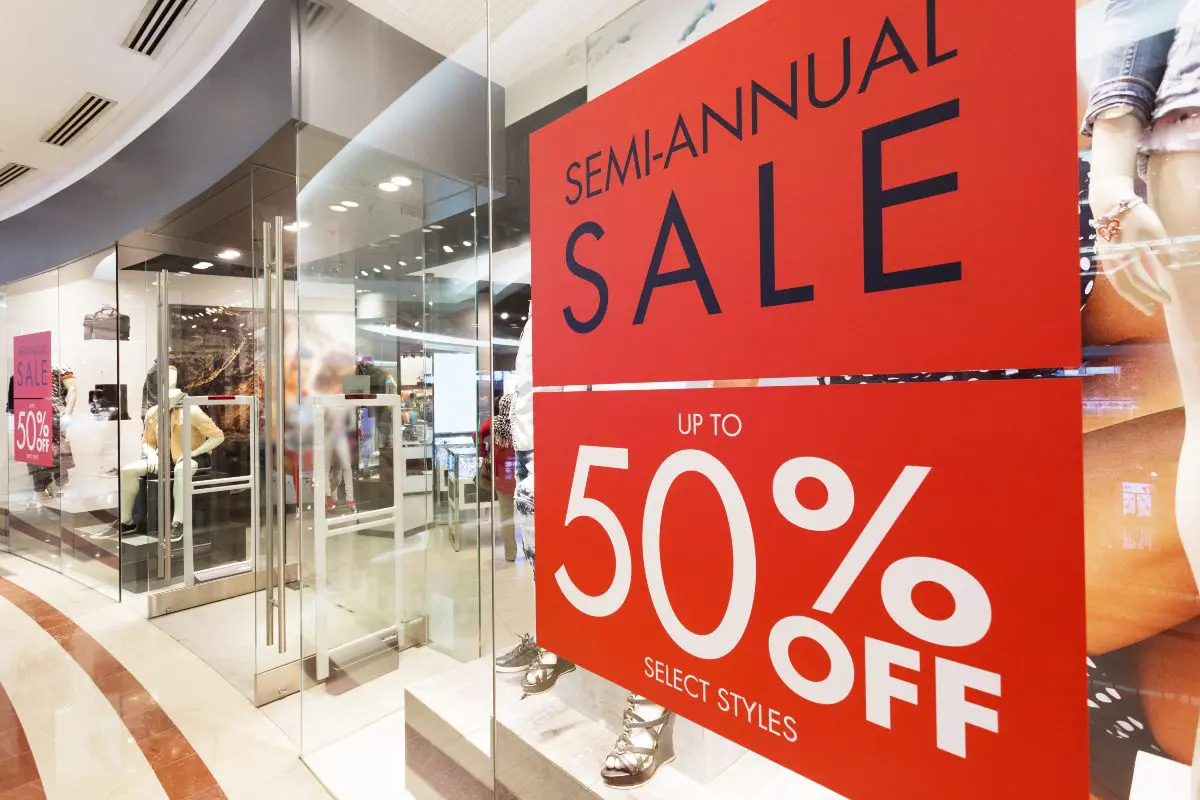Table of Contents
If you want to grow your business, a good place to start is by reviewing your retail pricing strategies.
A few good questions include:
- How close are you selling to the manufacturer’s suggested retail price (MSRP)?
- What do your sales displays look like?
- Do you ever sell your products at a loss?
We will explore these questions and more later in the article. But first …
What is Retail Pricing?

Retail pricing is one of the most critical components to any business that sells products direct to consumers. In a nutshell, retail pricing is simply the price offered when selling to consumers. This is different from business pricing and wholesale pricing, though retailers can use wholesale price to set their pricing strategy.
In general, you will set your retail price with profit in mind. For example, if your business plan includes a 20% profit margin, you will price your products at levels that will achieve this after all expenses are considered.
For example, if the item’s wholesale price is $10 and the profit margin is 20%, the retail price would be $12.
Factors that Affect Retail Pricing
Many factors affect retail pricing. Some of these factors are based on the business’s internal operations, while others stem from external influences beyond the business owner’s control.
Internal Factors
The most obvious factor that affects retail pricing is the cost of the products. If you are a retailer who gets your products from manufacturers or distributors at wholesale pricing, this will be product cost. On the surface, this may seem like an external factor, but businesses work with wholesalers to get the best price they can. While you may not be able to force a wholesale distributor or OEM to give you a special price, you do have the ability to try to negotiate the best deal for yourself.
In addition to product cost, you have other factors affecting retail pricing, such as advertising costs and employee salaries. For a business to turn a profit, its products as a whole need to be priced in a way that takes overall expenses into account. Therefore, a corporation like Walmart can typically offer a lower retail price on products than a small “mom and pop” shop.
External Factors
Competition also plays a role in retail pricing. You don’t want to sell the same type of a product as the competition at a much higher price point because you likely won’t turn a profit. Therefore, many big retailers offer price matching, where they will advertise a product at a specific price but will discount it to match a competitor’s lower price.
The health of the supply chain is another factor that affects retail pricing. Price is all a matter of supply and demand, and when the supply drops while the demand is still high, this typically leads to increases in retail price. We are seeing this with computers during the COVID-19 pandemic. Due to a silicon chip shortage, the supply of computers is down, which has led to higher computer prices than usual.
Retail Pricing Strategies

While the traditional retail pricing model centers around a consistent markup, other pricing strategies are sometimes used. Choosing the wrong retail pricing strategy is one of the reasons why businesses lose customers, so it’s essential to find the best model for your store.
Manufacturer’s Suggested Retail Price (MSRP)
One of the most common pricing strategies is the use of MSRP. Through this strategy, the retail price is based on the manufacturer’s suggestion. When suggesting the price, the manufacturer will consider the manufacturing cost, competitor pricing, and the profit margin.
Pros: Using this method ensures consistent pricing across locations. This is especially useful for high-ticket items, such as electronics. Additionally, retailers can sell at a profit rather than race to the bottom on price.
Cons: Using MSRP does not leave room for any competitive advantage over other retailers.
Loss Leader Pricing
You would never want to sell a product at a loss, right? Well, not necessarily.
While it may seem counter-intuitive, there are times when it makes sense to sell a product at a loss. With this strategy, merchandise is discounted to entice shoppers to the store. Retailers do not profit on the discounted item. Instead, their goal is to get shoppers to buy additional items along with the discounted one.
Pros: Loss leader pricing can drive additional traffic to your store, increasing sales.
Cons: This strategy is risky, as there is no guarantee that customers will buy items other than the loss leader product.
Keystone Pricing
Keystone pricing is very similar to MSRP. To implement a keystone pricing strategy, you simply take your wholesale cost for goods and set the retail price at double that cost. This ensures a gross profit margin of 50%. For example, if the wholesale price is $10, the retail price with the keystone strategy will be $20.
Pros: Keystone pricing ensures a healthy profit margin. It also simplifies your finances by basing the retail price on the wholesale price.
Cons: Not all retailers get the same wholesale pricing from distributors. If your wholesale price is noticeably higher than other retailers on the same product, then keystone pricing could put your cost at too high a level to be competitive.
Discount Pricing

Discount pricing is like loss leader pricing. You sell some products at a considerable discount to draw more customers into the store. Similarly, the aim is to attract customers to buy other products that are not discounted. However, the difference with discount pricing is that it doesn’t result in a loss. The retailer will still profit but at a lower margin.
Pros: Discounting items can be a great way to attract customers. A store full of customers has the potential to lead to significant profits. Discount pricing is also an excellent way to eliminate slow-moving inventory to create shelf space for higher volume products.
Cons: The most obvious downside of discount pricing is the hit you take on the profits of the discounted products. Also, you need to do additional advertising, further decreasing profits.
Penetration Pricing
This retail pricing strategy is optimal for new companies looking to gain awareness of their new brand through word of mouth rather than a large advertising budget. In penetration pricing, the goal is to initially price your products lower than the competition to entice different types of shoppers. Once your brand is off the ground, you can slowly raise the price to gain a larger profit.
Pros: Penetration pricing is an excellent way for new brands to be discovered. You’ll have budget-conscious customers buying your product instead of the competition due to the lower prices.
Cons: With this strategy, you need to be careful how quickly you raise prices. Ultimately, the goal is to increase the price to match similar products on the market. If you jump from being a low-priced option to immediately meeting competitive prices, you could turn off the customers you already acquired.
Channel-Based Pricing
Retailers who sell through multiple channels, such as online and in-store, may choose to set their prices differently depending on the channel. Perhaps you want to keep consistent profits, but your brick-and-mortar store has higher operational costs than your online store. In this scenario, you would be pricing the products slightly lower online than in the brick-and-mortar location.
Some online stores also offer an exclusive buy now pay later payment option that is not available in store. This can be an additional retail pricing strategy that can entice consumers to your online shop.
Pros: This strategy can be helpful if you want to promote one channel over another. For example, if you’re trying to build your online presence, you can advertise special “online-only” prices.
Cons: There is the potential for this strategy to backfire if customers feel “cheated” by the different prices. Many retailers will offer to honor the online price to keep these customers happy.
Premium Pricing

This strategy is geared toward brands selling luxury products. Rather than pricing below the competition, premium pricing involves pricing above the competition.
Pros: Selling at premium pricing can attract a different type of customer. If your brand’s goal is to position itself as a luxury brand, you want the right kind of customer. Pricing above many competitors is a way of showing your product is a premium offering.
Cons: This strategy only works if your product is exceptionally high-quality, and your marketing efforts are finely tuned to target the correct customer.
Pro Tip: If you are selling a premium product, it could make sense to offer to sell high-priced products in installments. Consider looking at some POS financing software to get set up.
Anchor Pricing
The anchor pricing strategy is when you set a “discounted” price side-by-side with the “original” price of the product. This gives customers the sense they are getting a good deal. Often the discounted price doesn’t need to be far off the original; just the act of showing that it’s cheaper than the original attracts the customer’s attention.
Pros: Customers feel like they’re getting a good deal on products when they see the original price was higher than what they are being asked to pay. Basic human psychology dictates that consumers are drawn to savings, large or small.
Cons: Today’s consumers are generally savvy regarding what things cost; they’ll be able to spot artificially inflated pricing. As a result, this type of deception may cause your customers not to return.
Sum Up
There are a variety of retail pricing strategies you can use for your store. The method you choose should align with your business type, the channels you sell through, and the target demographic of your customers. Don’t be afraid to experiment with different strategies to find what works for you.


